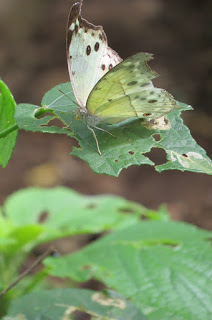Among Africa's loveliest and most memorable butterflies,these large insects have a wingspan of 80-95mm.The upper sides of the wings are a shining greenish-white,with oily violet reflections.The undersides are more muted
At rest,clinging to underside of foliage in the shade,they look like leaves
Habits &Habitat:Fairly common in forest and woodland habitats,
Can be very abundant seasonally,they fly with a sailing motion,often noticed in flight on sunny days,when their moving wings provide bursts of colour,
They frequently settle on the ground to mud -puddle.












